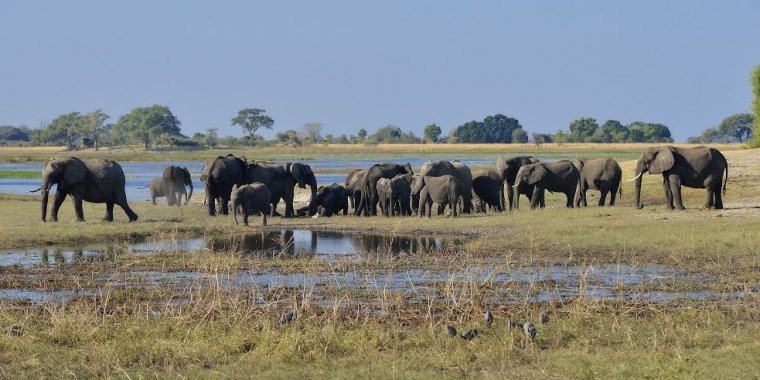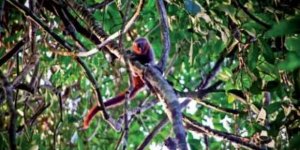| News / Science News |
Land cover change in Botswana savannas: Don't blame the elephants
Why are drylands changing in the Chobe district of Northern Botswana? A new study tracks differences in the savanna there across 30 years, and provides information that will allow governments and non-profit organizations to improve dryland management strategies in the region.

Increasing elephant numbers are often cited as a threat to forests; scientists found otherwise. ![]()
"There is a dynamic and complex relationship among land cover types that are constantly changing," said lead author J. Tyler Fox of the University of Arkansas. "Not much is known about what happens in transitional savanna ecosystems that are located between more arid and wetter climate zones."
The research examined satellite data from the past 30 years to track land cover changes in the Chobe district, a 21,000-square-kilometer area that encompasses urban, rural, communally-managed and protected lands.
"The region's savanna landscapes provide critical resources for people and other animals," said Fox. "Communities rely on forest resources such as firewood, thatch for roofs, and plants for food and medicine." The drylands are also used for tourism and for spiritual or cultural ceremonies.
The scientists observed a long-term trend of decreasing woodlands and increasing shrublands. Grasslands also varied considerably over the study period. Surprisingly, the loss of woodlands tended to be greater in protected forest reserves than in the more populated Chobe District.
The team discovered that there was little evidence for holding the region's fast-growing elephant population accountable for the forest loss.
Fire, however, was a factor. Over a 13-year period, there were nearly 10,000 fires in the Chobe district. More than 85 percent occurred during a time when there were no storms or lightning; most of the fires started with human activities. (National Science Foundation)
YOU MAY ALSO LIKE





